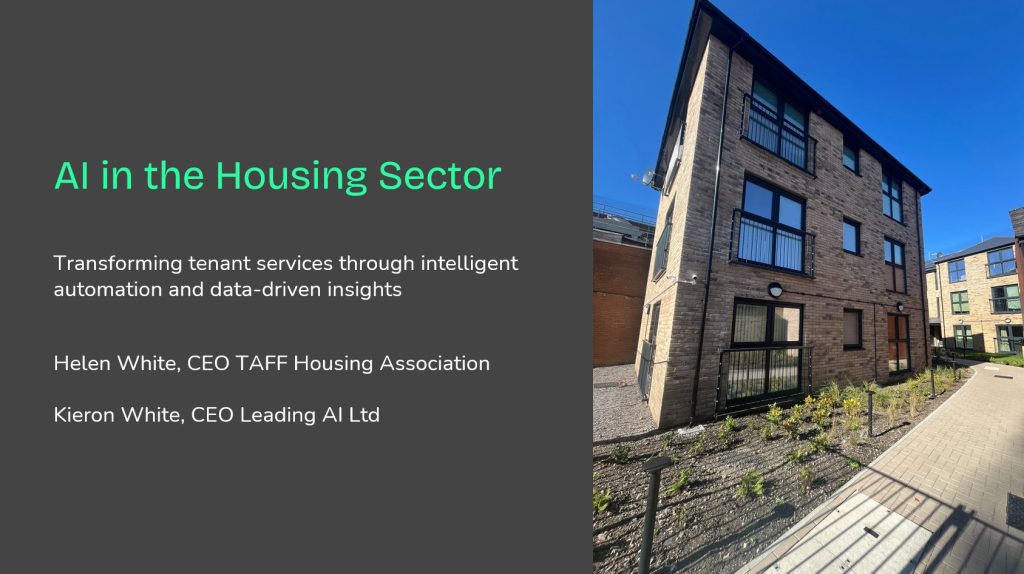
AI is becoming a core part of how we work — but most budgets haven’t caught up. Here’s how to plan, phase, and justify AI spending in a way that actually works.
I bet that AI still doesn’t have a proper line in your budgets – especially if you have one of those super tidy ones that was designed to last more than a few months. It’s (usually) not hardware, and it might not have made the cut for ‘digital transformation’ yet either – except maybe when it’s an upgrade to an existing solution. But even then, you wouldn’t have known two years ago that you needed to shell out for it this year. Back then, you would have been forgiven for thinking that the tech you routinely provided to most of your workforce would continue to cost the same, or maybe a little less, than it did in every other year.
When our customers – and especially non-profits and SMEs – start looking for ways to introduce generative AI into their work, it’s no surprise they find themselves scrabbling around for unrelated leftover funds and innovation grants. But if AI is going to be a long-term part of how we work (and it is), then we need a smarter, more sustainable way to budget for it.
We covered some of the challenges in paying for AI tools in What should your AI cost?. This time, we’re going further: How do you know what to put aside in the next budgeting round? Who should pay for it? And how do you make the case?
Where AI sits (and doesn’t sit) in your budget
For 2025, average IT spending is set to grow globally by between 7.9% and 9.3%, with AI infrastructure and advanced analytics ranking as the top priority for new investment (see ITPro, Deloitte). Many sectors are now allocating at least 5% of total digital budgets to generative AI tools (according to BCG). Only about 51% of organisations report that they can confidently evaluate AI ROI (so say CloudZero). Yes, I did some research (with a lot of help from Perplexity; I’m not really a details person).
One of the biggest barriers to sensible budgeting (more on that concept later) is that AI doesn’t sit neatly as One Thing in any existing category. It’s often too technical for service and delivery teams, too experimental for IT to guess what the business needs of the things they see emerging, and too fast-moving for traditional business planning. In practice, we see a lot of people trying to badge it as “innovation” and hope for some one-off pocket money – or (worse) avoid it altogether until there’s a business case so airtight it can walk itself through a procurement board at a quarterly meeting.
It’s understandable, but it’s not sustainable. If you want to get serious about AI, it needs a home in your budget process and someone accountable for it. (And that someone needs to understand AI isn’t just One Thing).
…and this is worth a read if you want to sound really clever on this topic: Why AI needs smart investment pathways to ensure a sustainable impact, World Economic Forum.
How to think about the cost
It’s tempting to skip to the end and ask, “How do we make this pay for itself?” But the honest answer is: you won’t exactly know until you try. That’s why early-stage experimentation matters – and why some of your AI budget needs to cover things that might not work. Fail fast (at a scale you can afford), learn and move on.
If you only look at tech costs, you’ll underestimate what it takes to get results and forget to do all the ‘managing change that sticks’ work.
Here’s our four best pieces of advice:
1. Budget for the “invisible”: Integration (if that’s what you’re after), training, data cleansing, governance, and staff support consistently emerge as requirements that can make or break AI projects. Software isn’t the only line item to watch: plan for learning, experimentation, and adaptation. This is the space where you enable your AI to make a difference.
2. Stage your investment: Try thinking of AI spending in phases: setup, experimentation, integration, and scaling, each with “go/no-go” criteria and learning at each point. Organisations that treat pilot projects as real learning opportunities (not just mini-rollouts) report faster scaling and better alignment.
3. Broaden your business case: Strict ROI arguments may not capture the full value of AI. Include outcomes like time savings, service quality and employee satisfaction, reduced errors, increased inclusion, and knowledge gains — even if some benefits are harder to measure upfront (although not that hard if you kick things off with a survey, before it’s too late – your LLM will analyse the results in no time).
4. Smarter funding models: Top-performing organisations blend sources of investment — tapping into digital transformation or IT budgets, winning external grants, and re-investing savings from other improvements back into AI work. Some even partner with vendors for shared-risk pilots or flexible payment terms. Never hurts to ask.
Making the case (again, ROI isn’t everything)
Yes, AI can straightforwardly save you time or money once it’s embedded – we know this better than anyone (have you read our impact report for North Yorkshire Council yet?). But if your business case process demands you demonstrate a guaranteed return before you can try anything, you’ll be stuck waiting for someone else to prove it first. Immediate ROI measures don’t help early adopters – and that’s still where a lot of teams are right now.
Broaden your case to include wider benefits with a rapidly growing evidence base. AI not only boosts efficiency but can also raise the baseline performance of less-experienced staff. In field experiments, AI-assisted customer service agents (especially newbies) unlocked significant gains in productivity and customer satisfaction.
Also, avoid the “magic bullet” fallacy: the best advice from industry veterans is that we overestimate the effect of technology in the short run and underestimate the effect in the long run. Don’t expect instant payback — budget to build capacity over time, with an eye on sustained change for the better.
Where to find the money
If you’re not ready to allocate a dedicated AI budget yet, or if that means you have to wait to invest in 2026, here are some ways we’ve seen organisations get started:
1. Underspends and pilot pots: Try to ringfence some small funds to explore one or two quick-win use cases. We’re not judging the underspend raiders; this is just a pragmatic and often timely solve. Don’t fight it.
2. Strategic top-slicing: Get agreement to dedicate a portion of existing digital, transformation or performance improvement budgets to AI experimentation.
3. Bids and grants: Some innovation funds, levelling-up pots or mission-led investment streams are open to AI-led proposals. Ask Perplexity to help you find them – or take a look around the UK government innovation hub, if that might apply to you.
4. Shared investment: Talk to vendors (like us) about co-developing or piloting new tools. We’re often keen to test new use cases too – if it’s genuinely original, you might get to share the development costs.
5. Income generation: AI tools that support e.g. schools, housing or adult social care, or that solve a shared problem, can sometimes be funded through traded services or charged-for models. Maybe develop something you can invite paying customers into later.
To re-cap…
When you’re thinking about how much to spend on AI, don’t wait around for perfect clarity or cast-iron ROI projections. Start small but start smart. A good rule of thumb is to ringfence around 5% of your digital or IT budget: enough to test, learn, and get some real value moving. Focus your case on what matters: time saved, services improved, teams getting more done with less frustration. And don’t forget the scaffolding: training, integration, adapting ways of working. That’s where a lot of the real effort (and benefit) sits. Your first AI budget isn’t just about the tools; it’s about building muscle. Think of it as your opening move.
A side-quest, where we talk about how to be better at smart budgeting in general (you can skip this if you like; you’re all set for your AI budgeting)
While creating this blog, I spent a very validating few minutes researching the barriers to good budgeting more generally – because we know the issue of inflexible or inaccessible budgets isn’t unique to generative AI. What we found will resonate with anyone who ever committed to booking a cheeky holiday they hadn’t budgeted for while thinking, “Ah, it’ll all come out in the wash.”
Our home and work mentalities aren’t so different. Turns out poor budgeting is always about our emotional spending, our need for instant gratification, and ‘present’ bias (that’s the thing where you are weirdly confident right now that you’ll somehow work it out, even if you didn’t last year and don’t know the future).
On top of that, there’s our capacity for avoidance and denial (who even opens the post anymore?) and your all-or-nothing mindset. The latter is when you’re ‘in for a penny, in for a pound’ – like when you break your diet slightly then decide you might as well finish the entire pack of biscuits. Or when you book an insanely fancy restaurant and order the peacock-stuffed pasta because you’re already in Bellagio and who knows when you’ll be back this way. There’s also our endemic lack of financial literacy, our desire to compete with the neighbours and a tonne of other familiar flaws.
Knowing (consciously or unconsciously) how widespread these issues are is why organisations then look to control budgeting in ways that risk but also therefore limit in-year changes of direction – and all that contributes to why some teams don’t even know where to look for sources of investment.
In other words: we routinely spend in unplanned ways, and that will keep happening because we’re humans and because change is the only constant, so we need to organise ourselves to better manage that.
Conversely, doing good budgeting is about having clear goals you can align the budget to, an accurate understanding of income and expenses, flexibility and a mechanism to course-correct, engagement, a sense of ownership, honest forecasting, good tools and systems, and a whole heap of cultural factors around psychological safety that links to having a framework of healthy incentives and disincentives for best practice (that’s the one where you operate in such a way that people aren’t mainly concerned about covering their backs). That’s how you can make the case that you can and should invest in AI to help realise your core objectives whether you knew that in the last budget-setting round or only realised later. But you knew all that. That’s why AI is now on your budget for the rest of this financial year, right? Right..?
Latest posts

AI, and how to make sense of the UK Government’s Budget announcement, without resorting to reading it
News

KnowledgeFlow in the Housing Sector with Helen White, CEO Taff Housing Association
Webinars

